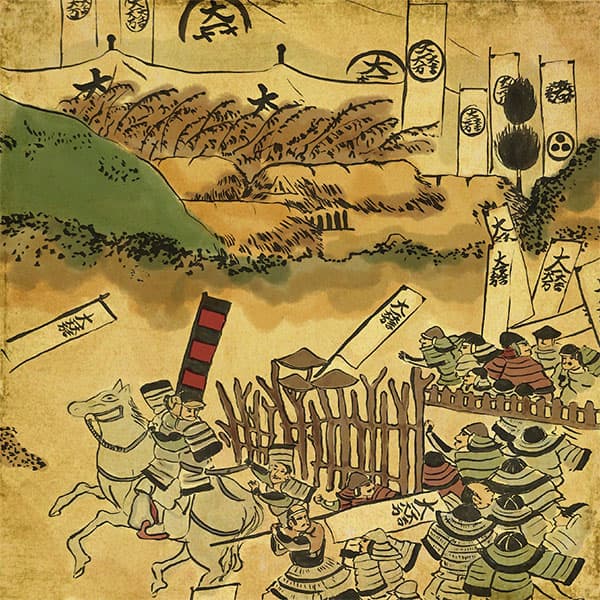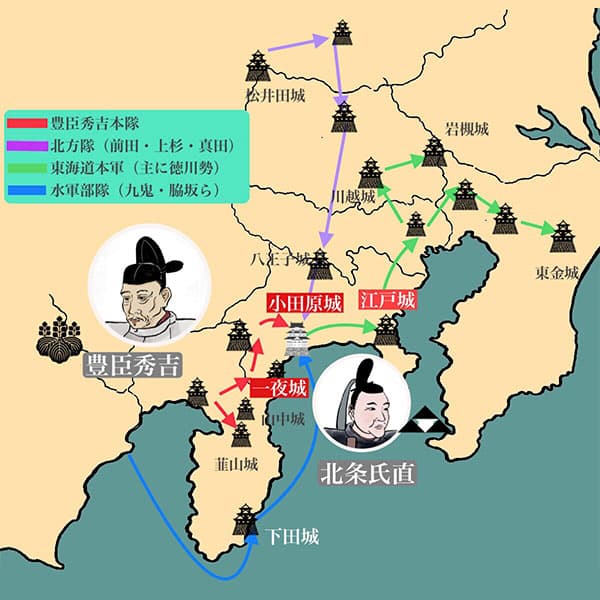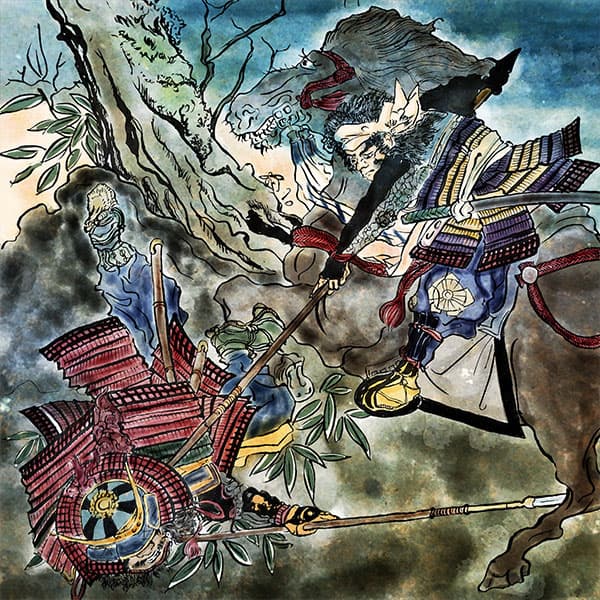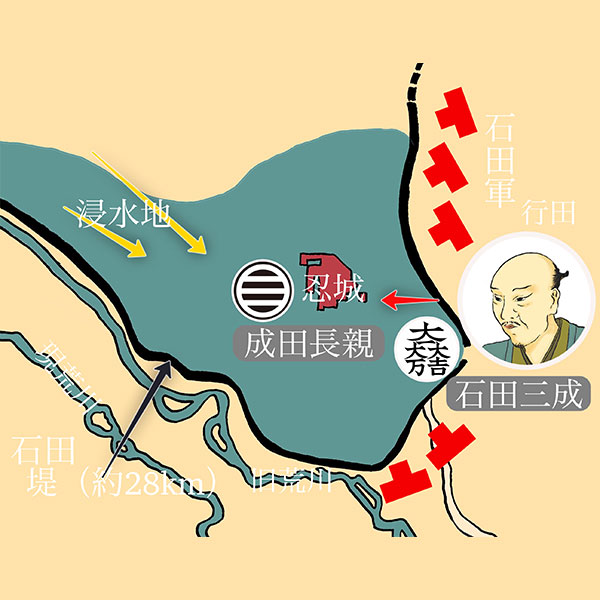Toyotomi Hideyoshi (1/2)The most successful person in the Sengoku period

Toyotomi Hideyoshi
- Article category
- biography
- name
- Toyotomi Hideyoshi (1537-1598)
- place of birth
- Aichi prefecture
- Related castles, temples and shrines

Osaka Castle

Nagahama Castle

Fushimi Momoyama Castle

Ota Castle

Sunomata Night Castle
- related incident
The late Muromachi period was a time when the world was in turmoil and was called the Warring States period. During the Sengoku period, there was a hero, Toyotomi Hideyoshi, who rose from the dead and unified the country. Hideyoshi served Oda Nobunaga, and rose from being a small man who could not even be called a samurai to become a powerful military commander of the Oda family. Furthermore, after Nobunaga's unfortunate fall, he won the power struggle between the Oda clan and unified the country. This time, I would like to introduce Toyotomi Hideyoshi.
Birth and wandering days
Toyotomi Hideyoshi was born in 1537 in Nakamura-go, Aichi District, Owari Province (present-day Nakamura Ward, Nagoya City, Aichi Prefecture). His origins are unclear, but he was born into a family of farmers or low-class samurai, and his childhood name was Hiyoshimaru. It is said that Hiyoshimaru, who lost his biological father at an early age and had trouble getting along with his stepfather, ran away from home and traveled around the country engaging in peddling and banditry.
As a young man, Hideyoshi took the name Tokichiro Kinoshita and served Matsushita Kahei, a vassal of the Imagawa family who ruled the Tokaido region, but he soon left the Matsushita family as well. In his youth, Hideyoshi spent his time wandering all over the place. Regarding the actual childhood of Toyotomi Hideyoshi, what is written in the Ehon Taikoki and Taiko Moseiki written in the Edo period has been widely transmitted, and details such as the house of his birth and his birthday have not been accurately transmitted. Is not ...
Kinoshita Tokichiro serves the Oda family
Tenbun 23 (1554), Tokichiro Kinoshita was around 17 years old.
He served Oda Nobunaga, who ruled part of Owari Province, as a servant. Fujikichiro, who stood out as a hard worker, distinguished himself through projects such as the construction of Kiyosu Castle.
A famous anecdote from this time is the story of removing sandals. The story goes that Fujikichiro, who was collecting Nobunaga's sandals, warmed Nobunaga's sandals in his pocket on a winter day and took them out when Nobunaga put on his sandals.Nobunaga learned of Nobunaga's loyalty to his master and collected Fujikichiro.
In 1564, the Oda clan attacked Mino Province (present-day Gifu Prefecture). At this time, Tokichiro used a trick to subdue the Saito family's vassals. The letter of relief sent to Mr. Tsubouchi still exists under the name of ``Kinoshita Tokichiro Hideyoshi,'' and is considered to be the oldest document bearing Hideyoshi's name.
There is also an anecdote that in the 9th and 10th years of Eiroku (1566 and 1567), he was said to have achieved great success in the construction of Sunomata One Night Castle. He has included Hanbei Takenaka as his subordinate. In this way, the Kinoshita family gradually took shape.
In April 1570, the Oda family marched into Echizen Province (present-day Reihoku, Fukui Prefecture) to subjugate the Asakura family, and Tokichiro joined the army. However, when they made it to Kanegasaki, they were betrayed by the Asai family, who had been in an alliance with them, and were attacked from behind (Kanegasaki exit point). Hideyoshi served as one of the lord's troops and achieved great results. After this, the Oda family captured Yokoyama Castle in northern Omi Province (present-day northern Shiga Prefecture) and left Fujikichiro in charge of the castle.
In the 3rd year of Genki (1572), Tokichiro changed his surname to Hashiba Sei and called himself Hashiba Hideyoshi in order to follow Niwa Nagahide and Shibata Katsuie, who were senior vassals of the Oda family.
Hideyoshi Hashiba and the stairs to success
In the first year of Tensho (1573), when the Asai family, which ruled the northern part of Omi Province, was destroyed by the Oda family, three of its territories were given to Hideyoshi Hashiba. Hideyoshi changed the name of Imahama to ``Nagahama'' and became the lord of Nagahama Castle.
Hideyoshi, who ruled Nagahama, exempted him from paying annual tax and various other duties, so people from nearby areas flocked to the area. From among those gathered, he incorporated former Asai family vassals and people from nearby provinces under his control, and expanded the Kinoshita family. After this, the Oda family will participate in the Battle of Nagashino, the pacification of Kitaise, and the Battle of Shigiyama Castle.
In 1577, Oda Nobunaga ordered Hashiba Hideyoshi to conquer the Chugoku region. Hideyoshi steadily rose through the ranks, and by this time had emerged as a powerful general of the Oda family.
Hideyoshi took hostage Kodera Yoshitaka (Kuroda Kanbei), whom he had been close friends with since before the capture of Harima Province, and set Himeji Castle as a base for pacifying the Chugoku region. You will be relieved and calmed down in return. Having captured Harima Province, Hideyoshi then began attacking Tajima Province as well.
In 1579, after a battle with the Mori clan, they subjugated Naoie Ukita, who ruled Bizen Province and Mimasaka Province (present-day Okayama Prefecture), and things progressed smoothly. However, during the invasion of the Chugoku region, Murashige Araki of Settsu Province, who belonged to the Oda family, rebelled and was forced to suspend the campaign.
In 1580, when the situation had calmed down, they once again proceeded to conquer the Chugoku region, and Tajima Province was also subdued.
The Honnoji Incident and the Battle of Yamazaki
In 1582, Hashiba Hideyoshi invaded Bicchu (present-day western Okayama Prefecture). Bicchu Takamatsu Castle was surrounded and flooded with water. In response, the Mori family, a major force in the Chugoku region, came out to support them, and Hideyoshi and the Mori family faced off against each other. Hideyoshi requested reinforcements from his lord, Oda Nobunaga.
Oda Nobunaga sent his soldiers fighting in various places to the Chugoku region, and himself advanced to Kyoto.
However, on June 2, 1582, Oda Nobunaga was attacked by his vassal Akechi Mitsuhide at Honnoji Temple in Kyoto and committed suicide (the Honnoji Incident).
The story of his master committing suicide in Kyoto reached Hideyoshi. After hearing the story, Hideyoshi immediately made peace with the Mori family, and immediately after making peace, he withdrew his army and returned to Kyoto.
The Honnoji Incident occurred in Kyoto on June 2nd, and about 10 days later, on June 13th, he confronted Mitsuhide Akechi in Yamazaki. Hideyoshi's march, which covered 230 km in 10 days, was called the ``Great Return of China.'' Akechi Mitsuhide, who defeated Oda Nobunaga, also did not think that Hideyoshi would return so soon. Akechi Mitsuhide fought against Hideyoshi and was defeated, and Mitsuhide died in a hunt for fallen warriors.
Battle of Shizugatake
On June 27, about 10 days after the Battle of Yamazaki where Akechi Mitsuhide was defeated, a meeting was held at Kiyosu Castle to discuss the future of the Oda family (Kiyosu Conference).
Here, Nobunaga's successor was chosen by Hideyoshi Hashiba, his grandson Sanboshi (the eldest son of Nobunaga Oda and the eldest son of Nobutada Oda, who died in the Honnoji Incident).
At the same time, at this meeting, the feud with Katsuie Shibata, the chief retainer of the Oda family, becomes decisive.
- related incident

- WriterTomoyo Hazuki(Writer)I have loved history and geography since my student days, and have enjoyed visiting historical sites, temples and shrines, and researching ancient documents. He is especially strong in medieval Japanese history and European history in world history, and has read a wide range of things, including primary sources and historical entertainment novels. There are so many favorite military commanders and castles that I can't name them, but I especially like Hisashi Matsunaga and Mitsuhide Akechi, and when it comes to castles, I like Hikone Castle and Fushimi Castle. Once you start talking about the lives of warlords and the history of castles, there's a side of you that can't stop talking about them.















